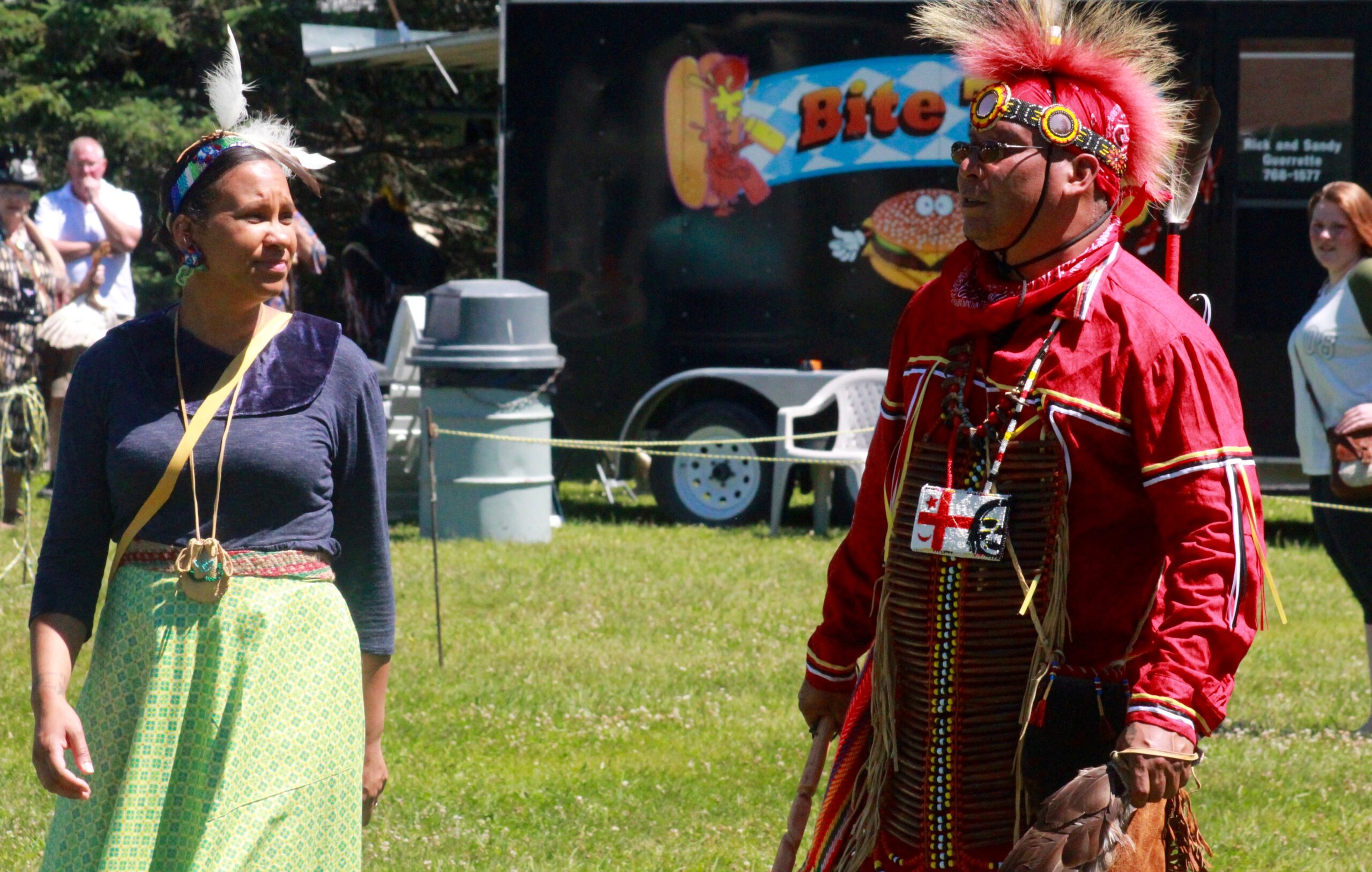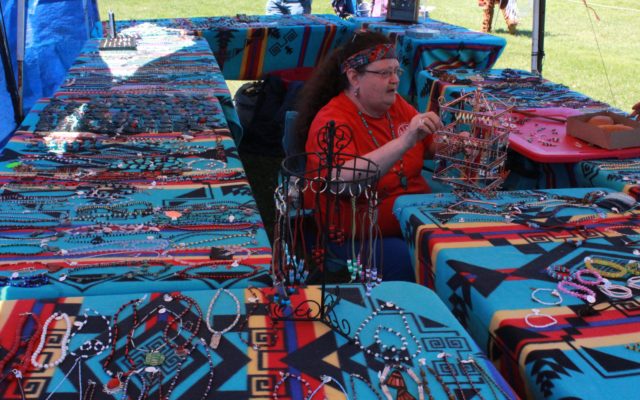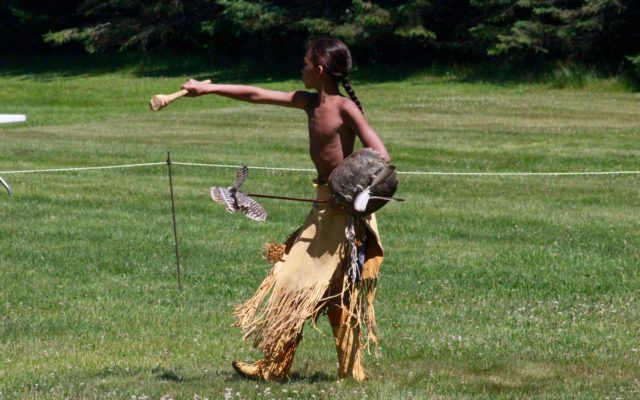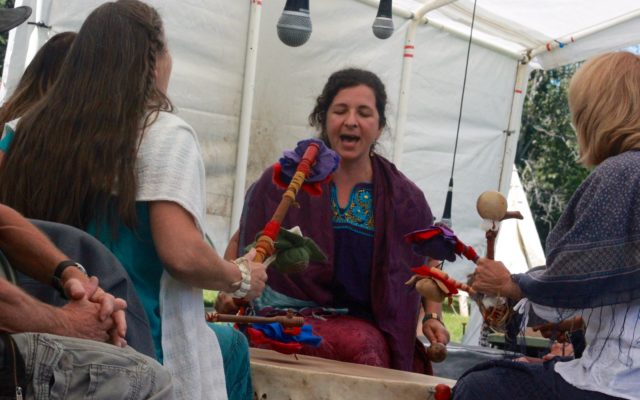
FORT KENT, Maine — More than 50 people gathered to watch the Grand Entry of the annual Wesget Sipu PowWow on Saturday, July 22.
The two-day event at Fort Kent’s Riverside Park included traditional song and dance, vendors, raffles and a free potluck supper.
The Wesget Sipu is a Native American tribe that originated on the Fish River in the Saint John Valley. Their name is a Mi’kmaq phrase that translates to “Fish River”. They have been hosting a powwow every year since 2001.
After the opening prayer and welcome, the Grand Entry kicked off at noon with 20 dancers and three traditional drum songs.
According to Donat Cyr, chief of the Wesget Sipu, powwows are held to honor traditions and culture, and teach Native American culture to the public.
“It’s important that the people know about the culture of the Valley,” said Cyr. “This river has been here a lot longer than we have, and our people came from the tribes up in Eagle Lake, Madawaska, Mapleton, all along the river. Our people came from these rivers.”
The dancers, dressed in traditional regalia, danced throughout a circle to drums and singing.
“To us, dancing is prayers,” said Cyr. “Every step we take is a prayer: for our Creator, for our veterans and our elderly.”
The chief said the turnout for the powwow was lower than he expected, but he was not discouraged. “We are here to have fun. We invite all our friends and family, and people from other tribes can get together in prayer. It’s like a family reunion,” said Cyr.
Norman Bernand, a member of the Mi’kmaq tribe of Presque Isle, was the master of ceremonies. “My job is to let people know what is happening,” said Bernand. “I explain the powwow etiquette, but I’m also here to keep it fun.”
Ken Odgen, of Dexter, made the drive with his wife for the powwow. “I’ve been a member of the Wesget Sipu for 15 years,” said Dexter. “And this powwow was definitely worth the drive. It’s good.”
After the Grand Entry, the circle was open to anyone who wanted to dance. “You don’t have to know the traditional dances,” said Bernard. “Do you know how to lift your knees? Sure you do. Do you know how to step up and down? Sure you do!” Everyone was encouraged to dance as a way of praying for anyone they may know in need.
“This is not just for the native people,” said Cyr. “It’s for everyone to enjoy.”
- DON PAUL works at her booth selling jewelry at the Wesget Sipu PowWow in Fort Kent on Saturday, July 22. (Elizabeth Theriault)
- Sassacus Brown, dressed in regalia, dances in Nothern Traditional style at the Wesget Sipu PowWow at Riverside Park in Fort Kent, Saturday, July 22. (Elizabeth Theriault)
- The Spirit of the Wind drum group play at the Wesget Sipu PowWow at Riverside Park in Fort Kent, Saturday, July 22. (Elizabeth Theriault)







